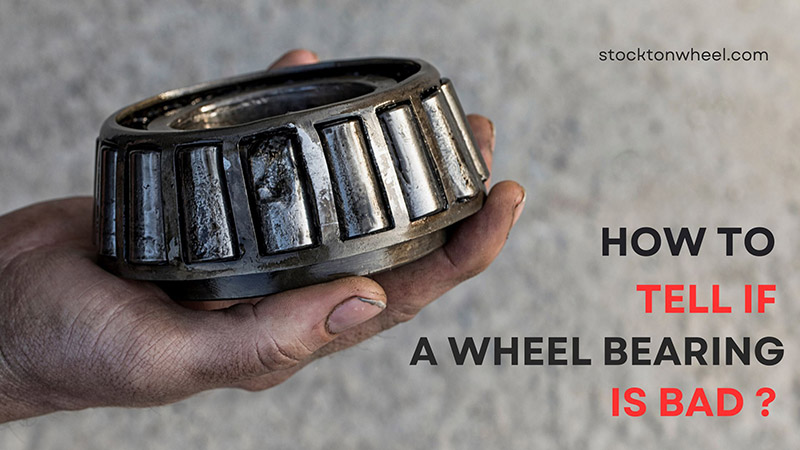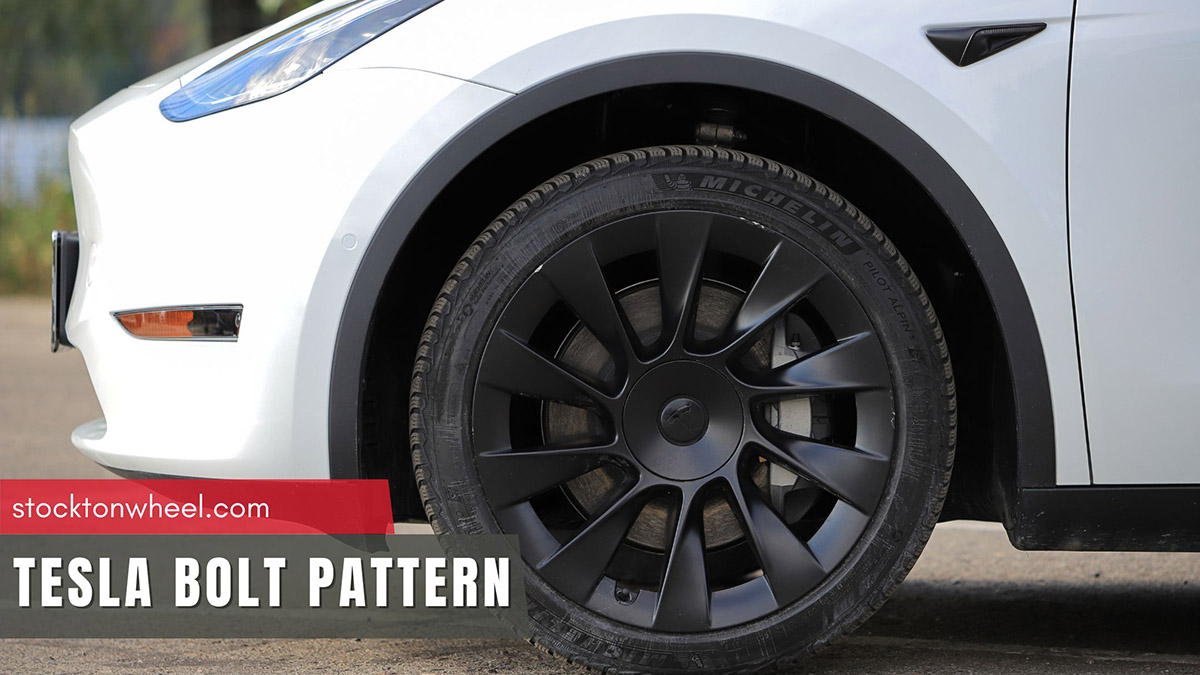Staying away from bad/broken wheel bearing should be the top priority if a smooth, no-bump driving experience is what you wish for. But how, though?
After all, symptoms are not always easy to recognize, especially if you are a beginner or have never encountered such issues before.
I am glad to lend a helping hand in this regard.
In this article:
How to Tell If Wheel Bearing Is Bad? (8 signs)
1. Braking Issues
The most noticeable (and alarming) signals of broken wheel bearings lie in the brakes, which occur after the bearings have been worn or loosened in their housing. More specifically, you will notice:
- Inefficient braking during road trips
- Brake slips
- Uneven pad wear
The rotors shift off their designated places, pushing the piston further whenever you tap the brakes. As a result, the braking experience always feels “off” and “spongy” – typical consequences of bad and loose bearings.
2. Uneven Tread Wear
Bearings and tires are interconnected, which explains why the tires tend to pivot and shift on the roads. Such issues lead to inconsistent and uneven tread patterns – something you will soon recognize if you keep a regular tire check secluded.

Still, not that uneven wear is not always caused by bad bearings; it might also result from other lacking maintenance aspects, such as suspension problems, misalignments after collisions and bad road conditions, and inflation issues.
3. Vibration In The Steering Wheel

Are there severe vibrations whenever you try to steer the car? Then it is time to check the wheel bearings. Worse, these pulsations and shakes might get even more serious at higher speeds or around steep turns.
Bad bearings cause dramatic “bearing play” in the housing areas, which quickens the steering wheel’s rate and even causes the tires to pull out.
4. Issues With The ABS Light

Lights on the dashboard – the ABS or tire pressure, for instance – indicate possible problems with the wheel bearing. More specifically, loose bearings might put excessive pressure on the car’s tire and braking functions, causing these lights to illuminate.
I suggest running a quick code check through the vehicle when that happens. While there have been no specific codes that exclusively point to loose bearings, you can still refer to ABS-related codes to assess whether the bearings are the true culprit.
5. Growling or Humming Noises
A low “growl” or hum during driving indicates strained bearings. These noises often occur due to over-the-top vibration speed and frequency in the bearing housing.
Although other issues (frame problems or CV joint troubles) also produce the same noises, there is still a major difference: bearing-related sounds will get louder over time, while other types of noise stay the same.
That is the golden rule to keep you from misdiagnosing the problem.
6. Clicking Sounds
Clicking noises also indicate faulty bearings and other problems with the entire assembly. Like humming/growing noises, they also get more deafening during acceleration – a defining trait that helps drivers differentiate those noises from other sounds.
7. Less Precise Steering and Driving
Experts refer to this issue as “looseness,” indicating a much-less-precise steering/driving experience than average.
It is characterized by slow responsiveness or operations 2-3 seconds later than usual, worsening as your car transcends to highways or greater speeds.
What Causes Wheel Bearings To Go Bad?
Faulty Installation
Wrong tools (ex: impact wrench, hammer, etc.) might wreak havoc on the bearing’s interior and exterior, causing it to fail earlier than expected.
Worse, reusing old accessories (seals, split pins, circlips, nuts, or bolts) instead of swapping them for new ones also pushes the bearings under unsafe/abnormal operating conditions.
Bearing wear is also increased as a result, posing immense risks of collisions or road accidents.
Impacts of Road Quality/ Damage
All possible impacts from careless driving (hitting a pothole or curbstone, rolling over bumps, etc.) might destroy the bearing and shorten its lifespan.
Bad Bearing Construction

Even without aggressive driving, wheel bearings have always been put under enormous pressure – all the more reason to purchase ones with high-quality manufacturing.
Otherwise, bearings with substandard materials may result in bad heat treatment, premature defects, and eventual failure.
Bad Driving Conditions
Rolling through deep mud or water also gives your bearings quite a blow. After all, mud, water, and other contaminants (road salt, dust, etc.) easily strike through the seals to invade the bearings, polluting and wearing them down.
Car Modifications
Fitting wider or bigger rims, stiffer absorbers/suspension rings, wheels with lower walls, etc., all bring about extra loads to the bearings and accelerate their wear.
Hence, I strongly recommend sticking to springs, absorbers, tires, and rims specified by your manufacturer. Only then can you minimize negative impacts and extend the bearings’ longevity.
How Much Does It Cost to Fix or Replace Wheel Bearings?

In general, you should expect to spend approximately $350 – though, of course, the actual number varies based on several aspects, such as:
- Your car make/model
- The damage’s location
- The brand or repair shop
And luxurious brands – characterized by special maintenance requirements and high-end components – inevitably charge much more for bearing repairs. So if you own such a car, brace yourself!
Thankfully, here is some great news: unlike matching tires, wheel bearings do not have to be fixed or replaced in pairs, even if they are on identical axles.
Each bearing works independently, meaning one’s failure does not affect the other. Such designs can save quite a few bucks for tight-budget drivers.
Can I Change or Fix The Wheel Bearings On My Own To Save Cost?
Yes, although your skills need to be slightly beyond average. These wheel bearings are quite small, which requires adept hands and keen attention from beginning to end.
Here is a rough guideline:
- Park your car on an even and flat surface
- Secure the bearings you DON’T replace using wheel chocks. That way, they will not interrupt your workflow.
- Loosen its lug nuts, then use a jack to lift that wheel. Once done, unscrew/remove your wheel completely.
- Remove brake calipers, castle nuts, cotton pins, dust cover, rotor, hub, and races
- Clean the knuckles, then install the new bearings/races
- Return all parts to their positions.
What If You Don’t Fix The Wheel Bearing? How Far Can You Drive On It?
Wheel bearings not fixed immediately can still carry your car to 50 miles (or even 100 miles for higher-end models).
But that is the furthest stretch they can reach. Anything beyond that, and your car will suffer from excessive pressure on the transmission, CV joints, and steering assembly. Blowouts or even explosions are only a matter of time.
FAQs
How Do I Know If My Wheel Bearings Are Bad Front or Back?
Simply listen to their sounds. Loud noises that sound closer to the driver’s seating position are likely from the front bearings!
How Long Should Wheel Bearings Last?
Given great maintenance and no premature wear, they can last 85,000 miles to 100,000 miles.
Conclusion
Paying regular attention to the wheel bearings might be difficult – given the small size and tricky installation – but I hope this guide can lend you helpful pointers. Feel free to contact me if you still feel confused or uncertain.








